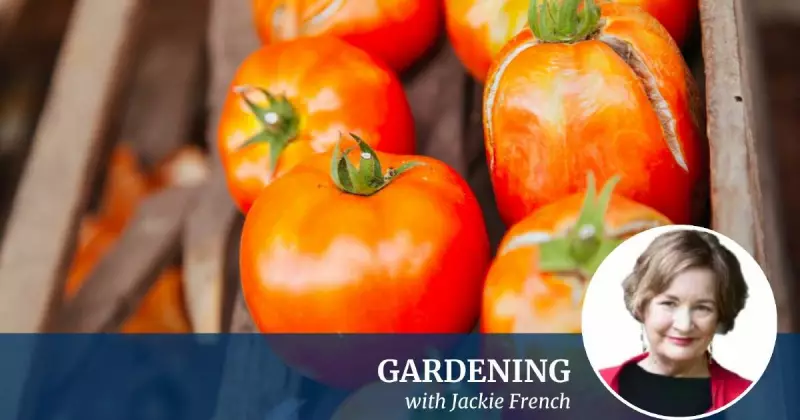
For many Australian gardeners, the quest to harvest the first sun-ripened tomato of the season is a competition with a history richer than the Melbourne Cup. This tradition, known as The Great Tomato Race, has captivated green thumbs since the first convicts planted tomatoes in their gardens back in 1793.
The History of the Tomato Race
The fervour for this horticultural contest once defined seasonal growing, though excitement waned with the year-round availability of supermarket tomatoes. Imagine a time when gardeners faced being tomato-less for eight months of the year. The first person to produce a fat, luscious red fruit truly held a prized victory.
In the 1960s, the rivalry in Araluen was so intense that orchardist Bill Mather would carry buckets of water and manure up a 200-metre steep mountain slope daily. His reward was a small, sunny patch that yielded ripe tomatoes potentially two days before his competitor, Ned Wisbey.
Other gardeners employed clever tricks, such as building concrete paths on a sunny hillside to reflect light and store heat, gaining an extra week of tomatoes annually. Even columnist Jackie French admits to a competitive streak, trying methods like plastic guards and reflective foil, though she found that nothing truly beats nature's schedule without artificial aid.
Key Strategies for a Bountiful Harvest
Decades of competitive growing have proven one fundamental fact: tomatoes need warm soil to grow and mature their fruit. While a greenhouse offers the only real shortcut for an early harvest in cooler climates, there are proven methods to maximise your crop once the soil has warmed up.
Firstly, location is paramount. Choose the sunniest, hottest spot in your garden, ideally next to a wall, tin fence, or garden shed that soaks up sun for most of the day. For urban dwellers, growing potted tomatoes on a sunny concrete patio several floors up in a frost-free apartment block could be the secret to winning the race.
Secondly, consistent feeding and watering are non-negotiable. It is nearly impossible to overfeed a tomato plant. A weekly application of hen manure, watered in well, works wonders. While tomatoes can survive with minimal water, as they did during the Second World War drought, a better and bigger crop comes from deep watering at least twice a week, especially after feeding.
Thirdly, give your plants space. Though it is tempting to create a dense, supportive thicket, spacing bushes about a metre apart ensures every part of the plant gets full sun, which is crucial for a good yield.
Fourthly, staking your plants is recommended. Upright bushes have better sun exposure than sprawling ones. A clever compromise is to stake the main plant but peg a couple of low branches to the soil, allowing them to form new roots and create more vigorous growth for increased production.
Overcoming Challenges and Final Tips
When it comes to variety, it makes little difference to the timing of the first fruit in the Australian climate. While smaller cherry tomatoes ripen a few days faster, cold-tolerant varieties like 'Russian Winter' will extend your cropping season long after others have finished.
The main enemy for tomato growers in many regions is the fruit fly. The best defence is to pick fruit as soon as it's fully red or to cover bushes with fine-meshed exclusion netting. Be vigilant about any fallen fruit, as it acts as a magnet for pests.
For those seeking a fabulous crop with minimal effort, buy advanced potted tomato bushes now. Transplant them into larger pots or a garden bed with slow-release fertiliser pellets, which activate at around 24 degrees Celsius. From there, consistent watering and picking are your main tasks.
You may not win the race for the earliest tomato, but your reward will be sun-warmed, richly flavoured, and delicious fruit. And a crucial final tip: never store ripe home-grown tomatoes in the fridge, as they begin to lose their flavour after about 24 hours.





